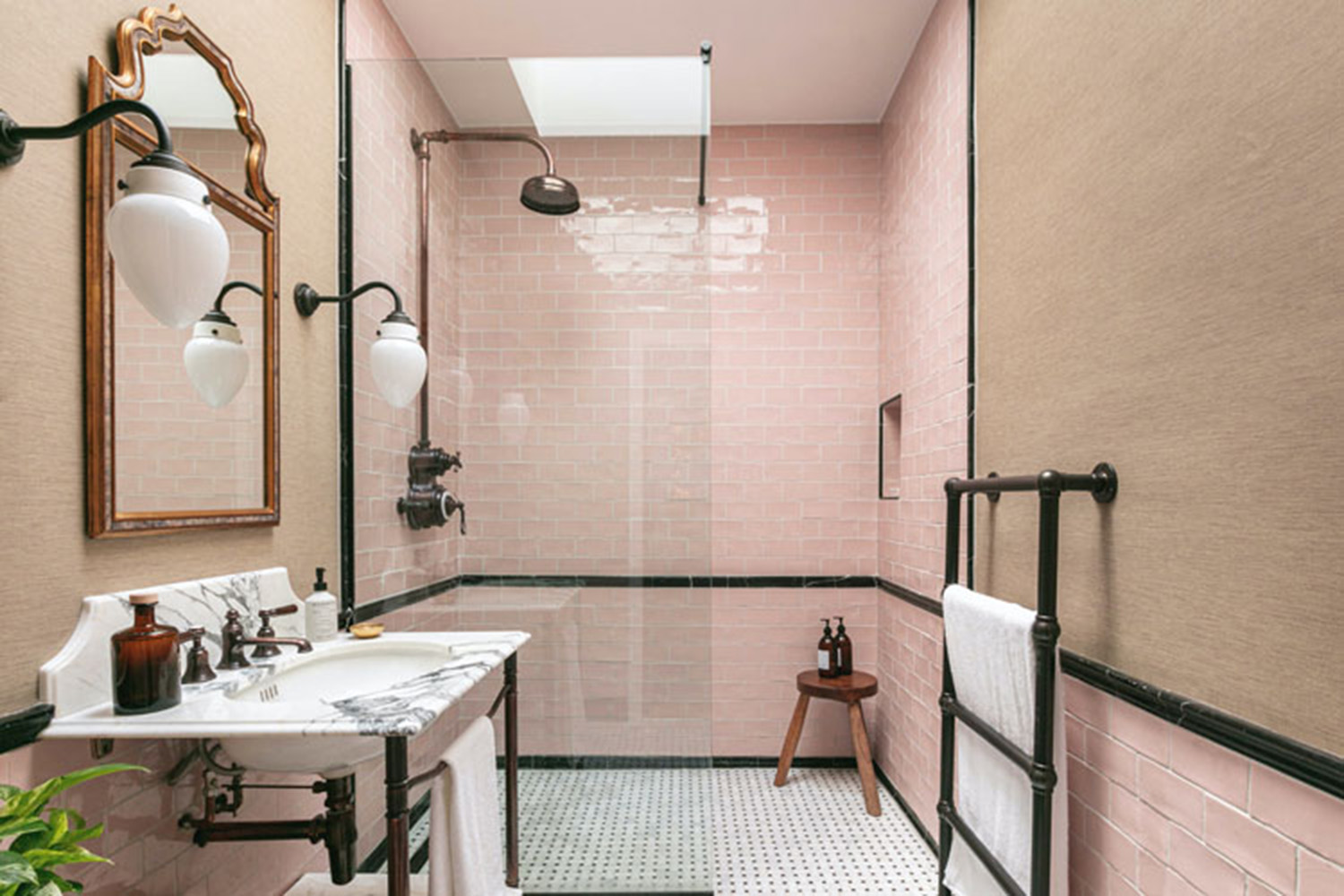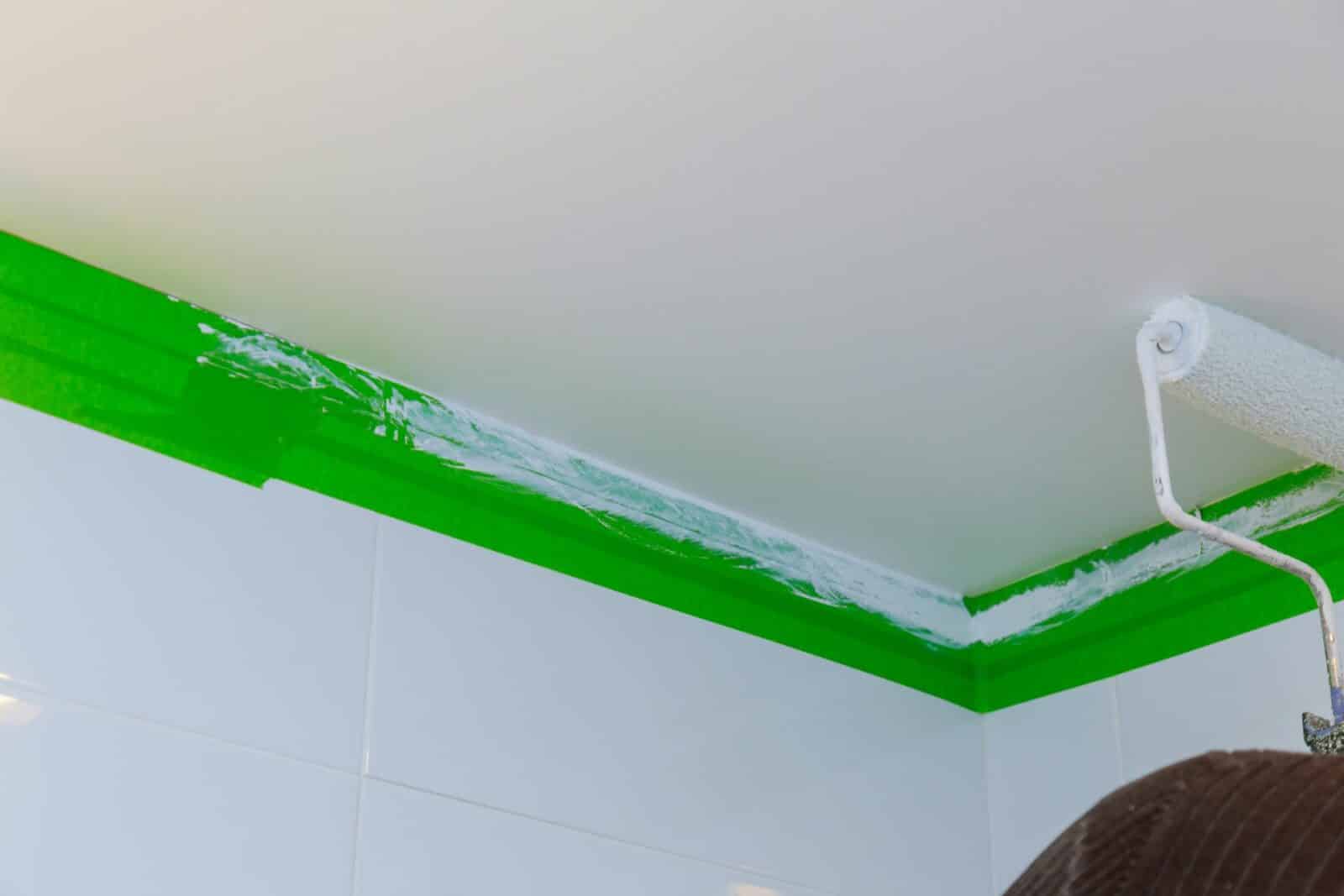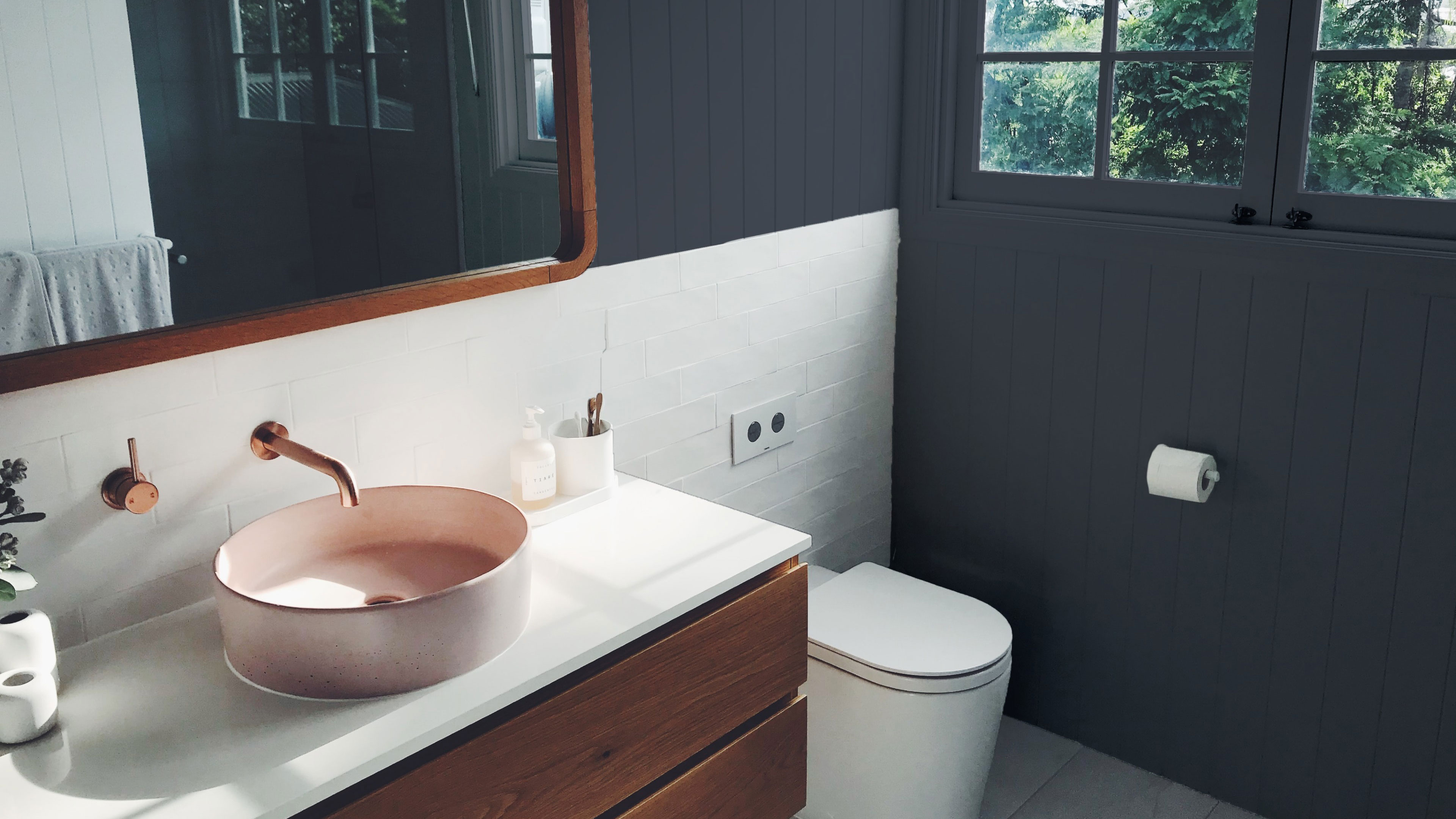Assessing the Existing Ceiling: Preparing Bathroom Ceiling For Painting

Before you grab your paintbrush and start transforming your bathroom ceiling, it’s crucial to assess its current condition. Understanding the type of ceiling you have and any potential problems will help you prepare it for painting and prevent future issues.
Types of Bathroom Ceilings
Bathroom ceilings are typically constructed using materials designed to withstand the unique conditions of this room, which often includes high humidity and moisture. Here are some common types of bathroom ceilings:
- Drywall: This is the most common type of bathroom ceiling, often covered with a moisture-resistant layer of drywall. It offers affordability and ease of installation.
- Tile: Tile ceilings are durable and moisture-resistant, often found in older bathrooms or those with a more traditional aesthetic. They can be cleaned easily but are more expensive and require more maintenance than drywall.
- Vinyl: Vinyl ceilings are often found in older bathrooms and offer a budget-friendly option. They are water-resistant and can be easily cleaned. However, they are not as durable as drywall or tile.
- Wood: Wood ceilings are a stylish and durable option but require proper sealing and maintenance to prevent moisture damage.
Potential Problems
The bathroom’s humid environment can lead to various problems on the ceiling. Here are some common issues you might encounter:
- Cracks: Cracks can occur due to settling, temperature fluctuations, or water damage. They can be minor or significant and require different approaches for repair.
- Water Damage: Leaking pipes or plumbing issues can lead to water damage on the ceiling, resulting in stains, warping, or even mold growth.
- Mold: Mold thrives in humid environments and can grow on the ceiling if there is moisture present. It can cause health problems and requires immediate attention.
- Peeling Paint: This can happen due to moisture damage, poor paint application, or simply age. It can be a sign of a deeper problem and should be addressed before painting.
Inspecting the Bathroom Ceiling
A thorough inspection of the bathroom ceiling is crucial to identify any problems before painting. Here’s a step-by-step guide:
- Visual Inspection: Examine the entire ceiling for cracks, stains, peeling paint, or any other signs of damage. Use a flashlight to illuminate areas that are difficult to see.
- Touch Test: Gently touch the ceiling to check for any soft or spongy areas, which could indicate water damage. Be careful not to press too hard, as this could damage the ceiling further.
- Smell Test: Check for any musty or mildew odors, which can indicate mold growth. If you detect any mold, do not proceed with painting until the mold is removed.
- Check for Leaks: Look for any signs of leaks, such as dripping water, water stains, or damp spots. If you find a leak, address it immediately to prevent further damage.
Ventilation: The Key to Preventing Future Problems
Proper ventilation is crucial for preventing future problems with your bathroom ceiling. A well-ventilated bathroom will reduce humidity levels and prevent moisture from accumulating on the ceiling.
“A bathroom should have a fan that runs for at least 15 minutes after each shower to remove moisture from the air.”
This will help to prevent mold growth, water damage, and other problems. Ensure your bathroom has a properly functioning exhaust fan and that it is used regularly, especially after showers or baths.
Surface Preparation

The next step after assessing the existing ceiling is surface preparation. This involves removing any old paint, wallpaper, or other coatings, repairing cracks and holes, and sanding the surface smooth. Proper preparation ensures that the new paint adheres well and creates a smooth, even finish.
Removing Old Coatings
Removing old coatings is crucial for achieving a smooth and even surface for painting. The process involves removing old paint, wallpaper, or any other coatings that may be present on the bathroom ceiling.
Here’s a step-by-step guide on how to remove old coatings:
- Scrape off loose paint: Use a scraper or putty knife to remove any loose or flaking paint. Work carefully to avoid damaging the underlying surface.
- Use a paint stripper: For stubborn paint, use a chemical paint stripper. Apply the stripper according to the manufacturer’s instructions and allow it to work for the recommended time. Then, use a scraper or putty knife to remove the softened paint.
- Remove wallpaper: If there’s wallpaper on the ceiling, use a wallpaper steamer or scoring tool to loosen the paper. After loosening, gently peel the wallpaper off the surface.
- Clean the surface: Once all old coatings are removed, thoroughly clean the surface with a damp cloth to remove any residue from the stripper or wallpaper.
Repairing Cracks and Holes, Preparing bathroom ceiling for painting
After removing old coatings, the next step is to repair any cracks or holes in the bathroom ceiling. These imperfections can be filled with patching compound or spackle.
Here’s a step-by-step guide on how to repair cracks and holes:
- Clean the area: Before applying patching compound or spackle, clean the area around the crack or hole with a damp cloth to remove any dust or debris.
- Apply patching compound or spackle: Use a putty knife to apply patching compound or spackle to the crack or hole. Press the compound firmly into the area, ensuring it fills the entire void.
- Smooth the surface: Use the putty knife to smooth out the patching compound or spackle, creating a level surface with the surrounding ceiling.
- Let it dry: Allow the patching compound or spackle to dry completely according to the manufacturer’s instructions. This ensures a solid base for painting.
Materials and Tools for Surface Preparation
Here is a table of materials and tools needed for surface preparation:
| Material/Tool | Use |
|---|---|
| Scraper or putty knife | Removing loose paint, wallpaper, and applying patching compound |
| Chemical paint stripper | Removing stubborn paint |
| Wallpaper steamer or scoring tool | Loosening wallpaper |
| Patching compound or spackle | Filling cracks and holes |
| Sandpaper (various grits) | Smoothing surfaces |
| Dust mask and safety glasses | Protecting yourself from dust and debris |
| Cleaning cloths | Cleaning surfaces |
Sanding and Smoothing the Ceiling
After repairing any cracks or holes, the final step in surface preparation is sanding and smoothing the bathroom ceiling. This ensures a smooth, even surface for painting.
Here’s a step-by-step guide on how to sand and smooth the ceiling:
- Start with coarse sandpaper: Begin by sanding the ceiling with coarse-grit sandpaper (80-100 grit). This removes any rough edges or imperfections from the patching compound or spackle.
- Progress to finer sandpaper: After sanding with coarse sandpaper, switch to finer-grit sandpaper (120-150 grit). This smooths out the surface further and removes any remaining sanding marks from the coarse sandpaper.
- Use a sanding block: To ensure even sanding, use a sanding block or a sanding sponge. This helps distribute the pressure evenly and prevents uneven sanding marks.
- Clean the surface: After sanding, use a damp cloth to wipe away any dust or debris. This ensures a clean surface for painting.
Priming and Painting

Priming and painting the bathroom ceiling are crucial steps in achieving a durable and aesthetically pleasing finish. Primer serves as a foundation for the paint, ensuring better adhesion and a smoother, more uniform appearance. Applying the correct paint type enhances the ceiling’s moisture resistance and protects it from mildew growth, common issues in humid bathroom environments.
Primer Selection
Primer acts as a bonding agent, improving the paint’s adherence to the ceiling surface. It also helps to seal the surface, preventing stains and odors from bleeding through the paint. Choosing the right primer depends on the existing ceiling material:
- For drywall: A standard acrylic primer is generally sufficient.
- For plaster: A primer specifically designed for plaster surfaces ensures optimal adhesion.
- For wood: A stain-blocking primer is recommended to prevent wood tannins from affecting the paint color.
- For previously painted surfaces: A bonding primer helps to create a smooth, uniform surface for the new paint.
Paint Selection
The bathroom’s high humidity levels necessitate a paint type that offers moisture and mildew resistance. Consider the following factors:
- Moisture resistance: Choose a paint labeled as “moisture-resistant” or “bathroom-grade.” These paints contain additives that repel water and prevent moisture damage.
- Mildew resistance: Opt for a paint with mildewcide added. This ingredient inhibits the growth of mold and mildew, keeping the ceiling clean and fresh.
- Color choice: While personal preference plays a role, lighter colors reflect light, making the bathroom feel more spacious and airy. Darker colors can create a more intimate atmosphere but might make the space feel smaller.
Application Steps
| Step | Description | Recommended Technique | Drying Time | 1. Prepare the ceiling: Ensure the ceiling is clean, dry, and free of debris. | Use a damp cloth to remove dust and dirt. | – | – | 2. Apply primer: Pour primer into a paint tray and use a roller to apply it evenly to the ceiling. | Use long, smooth strokes, overlapping each stroke slightly. | – | – | 3. Allow primer to dry: Refer to the manufacturer's instructions for drying time. | – | – | – | 4. Apply paint: Pour paint into a paint tray and use a roller to apply it evenly to the ceiling. | Use long, smooth strokes, overlapping each stroke slightly. | – | – | 5. Allow paint to dry: Refer to the manufacturer's instructions for drying time. | – | – | – |
|---|
Tip: Apply thin coats of primer and paint, allowing each coat to dry completely before applying the next. This helps to prevent drips and ensures a smooth, even finish.
Ventilation
Adequate ventilation during priming and painting is crucial. Open windows and doors to allow fresh air to circulate. This helps to dissipate fumes and prevent the build-up of harmful chemicals.
Tip: Wear a respirator mask to protect yourself from paint fumes, especially in enclosed spaces.
